Chloramine Reduction Filter – Whole House

Chloramine & Chlorine Removal – Whole house!
Chloramines
Chlorine, taste and odour
Sediment
- For use on city water that has chloramines
- Treats all the water in the home
- Reduces >95% chloramines & chlorine
- Auto backwash – no filters to replace
- Electronic display
- Easy to install
-
Click to buy online or in store (special order) at:
It can also be special ordered in-store at :

Not all models are available at all locations. If you questions regarding availability of a particular model, please call your local store or Rainfresh support.
-
Many municipalities across North America disinfect water using chloramines , a chemical compound formed by adding chlorine and ammonia to the water. Chloramines are used to reduce the formation of potentially cancer-causing compounds called Trihalomethanes (THM ). However, chloramines rended an offensive taste and odour to drinking water and beverages made from such water. In addition, chloramines can cause skin irritation, are corrosive by nature and are toxic to fish. 1/3rd of all Canadians drink water that has been treated using chloramines .
Rainfresh whole house CCAF Chloramine Reduction Systems reduce > 90% of chloramines and chlorine from the water. Installed on the main water pipe in the home, CCAF systems provide chloramine and chlorine -free water for drinking, cooking, bathing, washing and even outside taps for watering your garden.
LIST OF MAJOR CANADIAN MUNICIPALITIES THAT USE CHLORAMINES
ALBERTA : Edmonton, Lethbridge, Red DeerBRITISH COLUMBIA : Greater VictoriaMANITOBA : DauphinNEWFOUNDLAND : St JohnsONTARIO : Aurora, Brantford, Cambridge, Essex, Grey Bruce, Hamilton, Holland Landing, Kenora, Kitchener, Leamington, Markham, Newmarket, Ottawa, Queensville, Richmond Hill, Sault Ste Marie, Sharon, Toronto, Vaughan, WaterlooQUEBEC : Trois-RivièresSASKATCHEWAN : SaskatoonBENEFITS
- Provides chloramine and chlorine-free water throughout the home
- No regular filter replacements required
- Self-cleaning
- Filtration media lasts up to 7 years!
FEATURES
- Automatic self-cleaning (backwash) controlled by fully automatic bilingual electronic valve
- Easily programmable with a touch of the button (backwash cycle time, frequency or even choose when you want it to backwash)
- 360 degree rotatable connector fittings makes installation easy as they can be easily rotated to suit any installation angle or pipe direction. Also reduces cost of extra plumbing fittings
- ¾” NPT elbow or straight fittings
INSTALLATION
- Installs on main water line after the water meter and before water pipe divides into hot and cold. You can choose to bypass outside taps if desired.
- Requires air-gap drain connection or drain run can be run to a laundry tub
- 15 ft of drain hose included
- 120V AC power required (consumes only about 8W power)
REPLACEMENT FILTER, SALT OR CHEMICALS
- No salt, replacement filter or chemical required !
WARRANTY
- 10 year limited warranty
MODELS AND SPECIFICATIONS
Model Flow Rate (US GPM) Installed Dimensions Inlet/Outlet Drain Operating Pressure Average Chloramine Reduction Service Backwash HxWxD CCAF1 4 5 54″x10″x13″ ¾” NPT ½” 30 – 100 psi > 90% CCAF2 8 10 58″x13″x13″ ¾” NPT ½” 30 – 100 psi > 90% - CCAF1 is suitable for most homes with up to 3.5 bathrooms
- CCAF2 is suitable for most homes with up to 5.5 bathrooms
-
Download spec sheet (PDF):
- CCAF Chloramine Filter Brochure English
- CCAF Chloramine Filter Brochure French
Download Product Manual (PDF):
- CCAF Chloramine Filter Manual English
-
What are Chloramines?
Many municipalities across North America treat water by a process called “Chloramination”. It involves disinfecting water by chloramines, which are formed when ammonia is used in addition to chlorine. Chloramines reduce the formation of potentially cancer-causing Trihalomethanes (THMs). However, chloramines render an offensive taste and odour to drinking water & beverages made from such water. In addition, chloramines can cause skin irritation, are corrosive by nature, and are toxic to fish.
How do I know if my municipality is using chloramines?
Check with your town’s water supply dept. to confirm. Table 1 shows a list of municipalities that are confirmed to be using Chloramines.
What does the Rainfresh CCAF Chlorine Removal Filter do?
The CCAF chloramine filter removes chloramine, tastes and odours from ALL the water in the house (both hot and cold), including bathrooms, showers, kitchen and drinking water.
How does the Rainfresh CCAF Filter work?
CCAF features a compact bed of high quality catalytic activated carbon inside a fiberglass media tank. When chloraminated water flows through the carbon bed, chloramines, chlorine, taste and odours are instantly reduced and great-tasting water flows out of the unit.
To keep the carbon media clean & fresh, the unit backwashes (cleans) automatically after a specific time interval, typically once a week. The cleaning cycle is set for a default time of 2AM and lasts about 10 minutes. It is completely automatic.
How much water does the CCAF unit use when it backwashes?
In each backwash cycle (cleaning cycle), the unit uses water lesser than a load of laundry.
Where do I install the Rainfresh CCAF Chloramine Removal Filter?
The CCAF filter should be installed just AFTER the water meter so that ALL the water in the house (hot & cold) is treated. If you have a water softener, the CCAF filter should be installed BEFORE it. This will enhance the life of your water softener by protecting the degradation of softener resin due to chloramines/chlorine.
What do I need to do after the Rainfresh CCAF Filter is installed?
After the initial programming, there’s nothing else you need to do. Enjoy years of chloramine-free water.
Are there are filters to replace on the CCAF unit?
There are no regular filters to replace. However, over time (typically a few years), chloramine taste/odour returns (life depends on water usage and chloramine level in water). At this point just the media (and tank) needs to be replaced, which is available from the manufacturer. Media replacement typically takes 10 minutes.
Does the unit need power?
Yes. It stays always connected to a 110V AC power supply, but consumes very little power, as much as a digital alarm clock
What happens if there is a power outage?
The unit will retain the time and day for 48 hours. The rest of the programmed settings (backwash time and frequency etc.) are stored in a non-volatile memory and will not be lost during a power failure.
Is there a pressure loss through the system?
When properly sized, the system produces a very low pressure drop at service flow rates, usually less than 10 psi.
What is the warranty on Rainfresh CCAF Filter?
Limited 5 year warranty with a 10 year warranty on the mineral tank. Call Rainfresh for details
Have more questions? Enter you own question below and our customer service will get back to you within 24 hours.
-
To buy parts online visit Rainfresh webstore :
-
Chloramine removal filter whole house system is an excellent choice for removing chloramines and chlorine from water. Many municipalities across North America disinfect water using chloramines , a chemical compound formed by adding chlorine and ammonia to the water. Chloramines are used to reduce the formation of potentially cancer-causing compounds called Trihalomethanes (THM ). However, chloramines rended an offensive taste and odour to drinking water and beverages made from such water. In addition, chloramines can cause skin irritation, are corrosive by nature and are toxic to fish. 1/3rd of all Canadians drink water that has been treated using chloramines .
Rainfresh chloramine removal filter whole house reduces > 90% of chloramines and chlorine from the water. Installed on the main water pipe in the home, CCAF systems provide chloramine and chlorine -free water for drinking, cooking, bathing, washing and even outside taps for watering your garden.
LIST OF MAJOR CANADIAN MUNICIPALITIES THAT USE CHLORAMINES
ALBERTA : Edmonton, Lethbridge, Red DeerBRITISH COLUMBIA : Greater VictoriaMANITOBA : DauphinNEWFOUNDLAND : St JohnsONTARIO : Aurora, Brantford, Cambridge, Essex, Grey Bruce, Hamilton, Holland Landing, Kenora, Kitchener, Leamington, Markham, Newmarket, Ottawa, Queensville, Richmond Hill, Sault Ste Marie, Sharon, Toronto, Vaughan, WaterlooSASKATCHEWAN : SaskatoonBENEFITS of chloramine removal filter whole house
- Provides chloramine and chlorine-free water throughout the home
- No regular filter replacements required
- Self-cleaning
- Filtration media lasts up to 7 years!
FEATURES of chloramine removal filter whole house
- Automatic self-cleaning (backwash) controlled by fully automatic bilingual electronic valve
- Easily programmable with a touch of the button (backwash cycle time, frequency or even choose when you want it to backwash)
- 360 degree rotatable connector fittings makes installation easy as they can be easily rotated to suit any installation angle or pipe direction. Also reduces cost of extra plumbing fittings
- ¾” NPT elbow or straight fittings
INSTALLATION
- Installs on main water line after the water meter and before water pipe divides into hot and cold. You can choose to bypass outside taps if desired.
- Requires air-gap drain connection or drain run can be run to a laundry tub
- 15 ft of drain hose included
- 120V AC power required (consumes only about 8W power)
REPLACEMENT FILTER, SALT OR CHEMICALS
- No salt, replacement filter or chemical required for Rainfresh chloramine removal filter whole house!
-
Reviews
Add a review Cancel reply


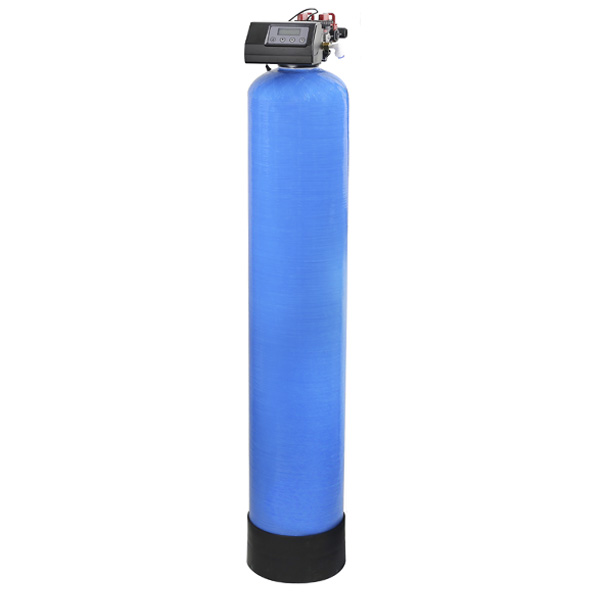
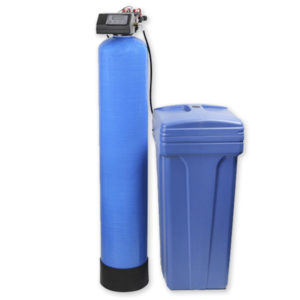
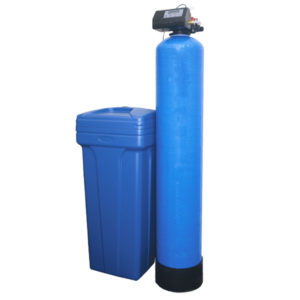
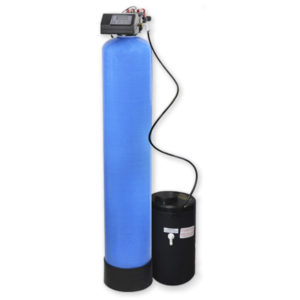

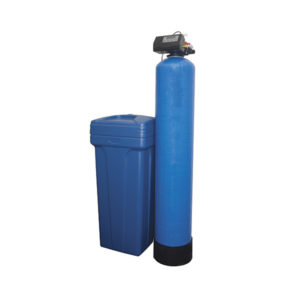
Excellent product. Removes chloramines completely.